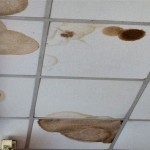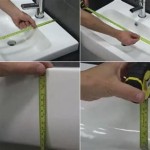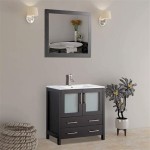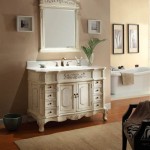How to Remove Mold From a Bathroom Ceiling With Hydrogen Peroxide
Mold growth in the bathroom is a common problem, particularly on the ceiling. This is due to the high humidity levels and moisture build-up that often occur in bathrooms, creating a perfect environment for mold spores to thrive. While the presence of mold can be unsightly and raise concerns about health hazards, it is usually manageable with a few simple steps. One effective and relatively safe method for removing mold from bathroom ceilings is using hydrogen peroxide.
Hydrogen peroxide is a common household disinfectant that is effective at killing mold and preventing its growth. It works by breaking down the cell walls of mold spores, effectively destroying them. However, it is important to note that hydrogen peroxide is a strong oxidizer and should be used with caution. Always wear protective gear, such as gloves and eye protection, when handling hydrogen peroxide.
Preparing the Area
Before applying hydrogen peroxide, it is essential to prepare the affected area properly. This involves clearing the space and protecting surrounding surfaces. Start by removing any items hanging from the ceiling, such as light fixtures, showerheads, or towel racks. Cover adjacent surfaces with a drop cloth or plastic sheeting to prevent the spread of mold spores or damage to the surrounding area.
To prevent the hydrogen peroxide from damaging the ceiling's paint or finish, it is crucial to pre-clean the affected area. For this, use a brush or vacuum cleaner equipped with a HEPA filter to remove any loose mold particles and debris. This step helps ensure the hydrogen peroxide will effectively penetrate the mold and prevent its re-growth.
Applying Hydrogen Peroxide
Once the area is prepared, you can start applying the hydrogen peroxide. The concentration of hydrogen peroxide used should be between 3 and 6 percent. You can purchase this at most drugstores or supermarkets. For easier application, dilute the hydrogen peroxide with water in a ratio of 1:1. This will make the solution less potent while still maintaining its effectiveness.
To apply the solution, use a spray bottle or a clean cloth. Saturate the affected area with the hydrogen peroxide solution, ensuring complete coverage. After application, allow the solution to sit for at least 30 minutes to ensure the mold is killed. During this time, try to keep the area undisturbed and avoid allowing the solution to dry out completely.
Cleaning and Drying
Once the hydrogen peroxide has had time to act, it is time to clean and dry the affected area. Using a clean cloth or sponge, gently scrub the mold-affected area. This will help remove any remaining traces of mold and dead spores. For stubborn mold stains, you can use a soft-bristled brush for more thorough cleaning.
After scrubbing, rinse the area with clean water to remove any residue from the hydrogen peroxide solution. Then, thoroughly dry the ceiling using a dry cloth or towel. It is crucial to allow the area to air dry completely, as any residual moisture can encourage the regrowth of mold. This may require opening windows or running a fan to improve ventilation.
Preventing Mold Growth
While removing existing mold is important, preventing its recurrence is equally crucial. To prevent mold growth, address the root cause of the moisture problem. This may involve improving ventilation by installing exhaust fans, minimizing moisture buildup through proper showering habits, and addressing plumbing leaks promptly.
Additionally, consider using a mold and mildew-resistant paint for the bathroom ceiling. This type of paint forms a barrier that helps prevent mold growth. Regular cleaning and sanitizing of the bathroom can also help prevent mold from taking hold. Be sure to wipe down surfaces after showering, clean shower curtains or liners regularly, and avoid storing items in the bathroom, especially those made of fabric or paper.
By following these steps, you can effectively remove mold from your bathroom ceiling and prevent its recurrence. Remember to always wear protective gear when handling hydrogen peroxide, and be sure to address any underlying moisture issues to prevent future mold growth. While hydrogen peroxide is a safe and effective solution for mold removal, it is always advisable to seek professional help if you are dealing with extensive mold infestation or if you have any health concerns regarding mold exposure.

Bathroom Ceiling Mold Removal When To Clean Call Branch Environmental

Does Hydrogen Peroxide Kill Mold What Works And Doesn T

Mold On Bathroom Ceiling How To Clean Off

Mold On Bathroom Ceiling How To Clean Off

The Ultimate Guide On How To Clean And Get Rid Of Mold Pro Housekeepers

How To Remove Ceiling Mold Diy Methods

How To Remove Mold From Bathroom Ceiling Safely Cleaning

How To Clean Mildew Off Bathroom Ceiling Best Tips

Mold On Bathroom Ceiling Wipe Out With Diy Remedies

How Do You Remove Mold From Bathroom Textured Ceiling Hometalk
Related Posts






